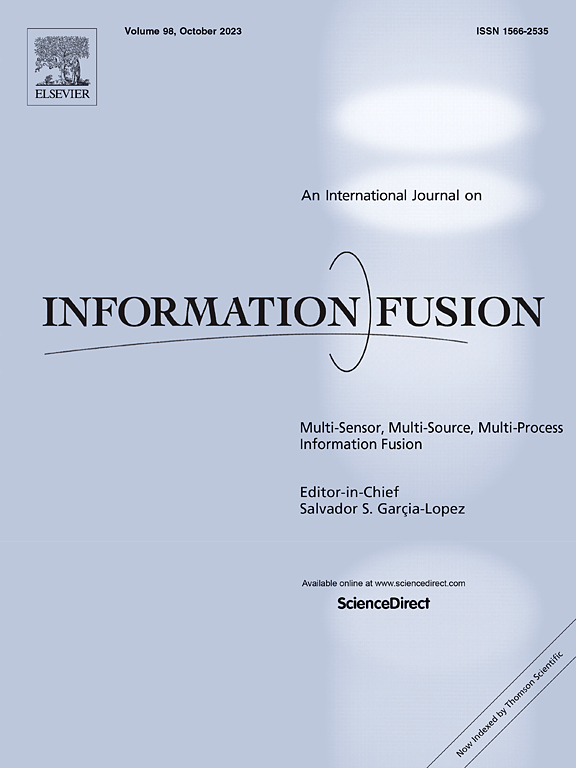Multi-level correlation information fusion via three-way concept-cognitive learning for multi-label learning
IF 15.5
1区 计算机科学
Q1 COMPUTER SCIENCE, ARTIFICIAL INTELLIGENCE
引用次数: 0
Abstract
Multi-label learning tasks typically involve complex correlation between labels, which often span across multiple levels. Accurately capturing and fusing these multi-level correlation information is crucial for improving prediction performance and understanding the potential relationship between labels. The current mainstream label correlation acquisition methods mainly focus on statistical analysis of labels. However, these methods lack exploration of the hierarchical structure of correlation, which may lead to the cognitive bias of labels and the decline in predictive performance. To address this, a multi-label learning model with multi-level correlation information fusion via three-way concept-cognitive learning (MCF-3WCCL) is proposed to capture the hierarchical correlation between labels more comprehensively, improve the prediction performance and enhance the interpretability. In this model, three-way concept-cognitive operators are utilized to structurally represent label concepts, thereby capturing the hierarchical correlations among labels. Additionally, the extent of label concepts are used as clues, which are mapped into feature concepts to form the dependencies between labels and features. On this basis, by fusing these feature concepts, the overall cognition of the label is finally formed. Extensive comparative experiments reflect that the proposed method is superior and versatile.
基于三向概念认知学习的多层次相关信息融合多标签学习
多标签学习任务通常涉及标签之间复杂的相关性,通常跨越多个层次。准确地捕获和融合这些多层次的相关信息对于提高预测性能和理解标签之间的潜在关系至关重要。目前主流的标签相关获取方法主要集中在标签的统计分析上。然而,这些方法缺乏对相关的层次结构的探索,这可能导致标签的认知偏差和预测性能的下降。为解决这一问题,提出了一种基于三向概念认知学习的多层次相关信息融合的多标签学习模型(MCF-3WCCL),以更全面地捕捉标签之间的层次相关性,提高预测性能并增强可解释性。在该模型中,利用三向概念认知算子对标签概念进行结构化表示,从而捕捉标签之间的层次关联。此外,以标签概念的范围为线索,将其映射到特征概念中,形成标签与特征之间的依赖关系。在此基础上,通过融合这些特征概念,最终形成对标签的整体认知。大量的对比实验表明,该方法具有优越性和通用性。
本文章由计算机程序翻译,如有差异,请以英文原文为准。
求助全文
约1分钟内获得全文
求助全文
来源期刊

Information Fusion
工程技术-计算机:理论方法
CiteScore
33.20
自引率
4.30%
发文量
161
审稿时长
7.9 months
期刊介绍:
Information Fusion serves as a central platform for showcasing advancements in multi-sensor, multi-source, multi-process information fusion, fostering collaboration among diverse disciplines driving its progress. It is the leading outlet for sharing research and development in this field, focusing on architectures, algorithms, and applications. Papers dealing with fundamental theoretical analyses as well as those demonstrating their application to real-world problems will be welcome.
 求助内容:
求助内容: 应助结果提醒方式:
应助结果提醒方式:


